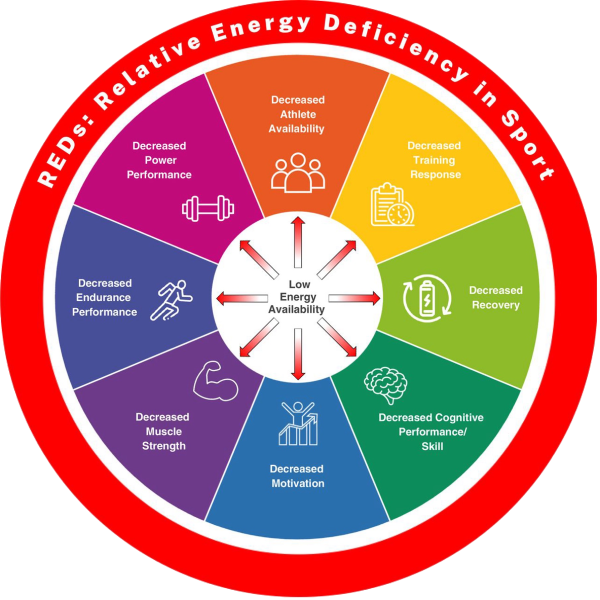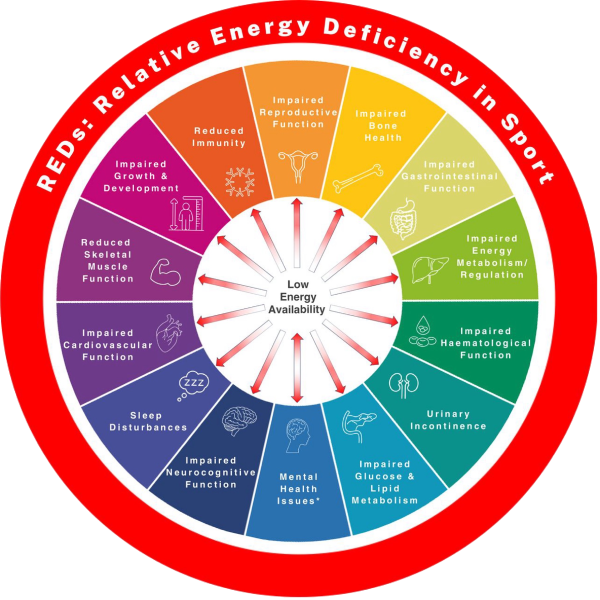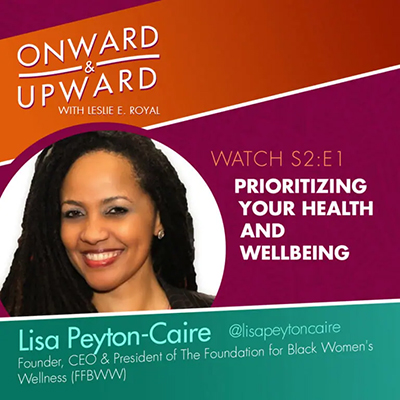The New Female Athlete Triad: A Complete Guide to Understanding Relative Energy Deficiency in Sports
The Balance of Exercise, Nutrition, and Women’s Health
- Key Takeaways
- What is RED-S or the Female Athlete Triad?
- What Causes RED-S?
- Who Is At Risk Of Getting RED-S?
- How Do I Know If I Have RED-S?
- When To Seek Help
- Treatments For RED-S
- Preventing RED-S
- Conclusion
Key Takeaways
- RED-S means Relative Energy Deficiency in Sports. It is an energy imbalance in athletes who do not meet their daily nutritional needs.
- RED-S was known as the female athlete triad in the past, but this term is no longer accurate since the condition can also affect males and other body parts and processes besides bones and periods.
- RED-S can happen when a person exercises and does not eat enough.
- All athletes, professional or recreational, are at risk of getting RED-S. However, it is more common in athletes whose sports focus on size (e.g., weightlifting), appearance (e.g., ballet), and endurance (e.g., running and swimming).
- The signs and symptoms of RED-S include irregular periods, amenorrhea (missed periods), aching bones or fractures, not growing or developing appropriately, abnormal heart rhythm, gastrointestinal (GI) imbalance, mental health problems, and low athletic performance.
- Getting help early from a parent, coach, or physician is important for developing a healthy environment around exercise, nutrition, and body image, which can help with RED-S.
What is RED-S or the Female Athlete Triad?
RED-S means Relative Energy Deficiency in Sports. It is an energy imbalance that can occur in athletes who do not meet their daily nutritional needs. In simpler terms, RED-S happens when people do not eat enough to balance how much they exercise.
In the past, RED-S was called the “female athlete triad,” referring to a diagnosis based on three things:
- Being a female athlete
- Having abnormal periods
- Having unhealthy bones
The phrase “female athlete triad” is no longer accurate because this disease can also happen to male athletes, and it affects many other body parts and processes besides bones and periods.
What Causes RED-S?
Exercising but not eating enough can cause RED-S. However, it is not as simple as it sounds. Many people with RED-S do not realize they have it because it can be subtle.
Some people do not eat enough on purpose, such as people with eating disorders, who purposely undereat or throw up after eating. Some others do not realize they are not eating enough. They eat their three meals daily, but do not get the right calories, protein, carbs, and fat breakdown.
This imbalance can affect your hormones. Hormones are little messengers that your body parts use to communicate with each other. You may have heard of hormones when talking about periods, birth control, or your mood. However, your body has thousands of hormones that do many essential things. Your brain is the epicenter that releases hormones. These hormones tell other organs what to do, and your brain requires a lot of energy (or food) to carry out this function. If your brain does not have enough energy, it thinks it needs to go into survival mode and decides which parts of your body should take a break and which parts should work extra hard.
Who Is At Risk Of Getting RED-S?
An athlete is anyone who exercises. Any athlete in any sport, professional or recreational, is at risk of getting RED-S.
More specifically, it is more common to see RED-S in athletes who focus on size (e.g., weightlifting), appearance (e.g., ballet), and endurance (e.g., running and swimming).
People often assume only very thin girls have RED-S. While it is more common in underweight women (BMI <17.5), it can affect anyone of any size. A survey of college athletes showed that 7% had never gotten their periods. A quarter of these athletes were cheerleaders, divers, and gymnasts, and 2% to 5% stopped having their periods. Two-thirds of these athletes were dancers and runners.
7% of all college athletes have primary amenorrhea (never having a period). Cheerleaders, divers, and gymnasts represent 22%. 2% to 5% of all college athletes have secondary amenorrhea (missing periods). Dancers and runners represent 65-69%.
RJ Gould
How Do I Know If I Have RED-S?
Signs And Symptoms
RED-S has many symptoms:
- Irregular periods. This often presents as skipping months between periods. Having irregular periods is the most common symptom. About a quarter of female athletes experience this. A period should happen consistently every 3–5 weeks (21–35 days). Certain life events or stressors may cause you to skip a month here and there, but if you consistently go 3+ months between periods, especially with increased exercise, it can be a sign of RED-S.
- Amenorrhea. This means not having a period. If you are older than 16, it is not normal for you to have never had a period.
- Aching bones or fractures. Your bones are at their strongest from puberty into your late 20s, so it should be really difficult to get a fracture. About 16% of people with RED-S have a fracture.
- Not growing or developing appropriately. If you are significantly shorter than your parents or siblings, or not developing breasts or pubic hair around the same time as your friends, these may indicate you have RED-S.
- Abnormal heart rhythm. This happens when your heart is skipping a beat or racing.
- Gastrointestinal (GI) imbalance. This can include frequent bloating, nausea, vomiting, or diarrhea.
- Mental health problems. Low energy can make you easily irritable, depressed, or anxious.
- Low athletic performance. RED-S can decrease endurance and coordination, making it hard to keep up with your sport.
16% of people with RED-S have had at least one fracture.
– Essentials of Pediatric and Adolescent Gynecology – E-book
When To Seek Help
It is important to get the help you need early. You may recognize some of the symptoms listed, or are a healthy athlete who wants to stay healthy. Many people can help you.
It is often difficult to know what “eating enough” means. Speaking to a parent, coach, or doctor can be a significant first step to helping you develop a healthy environment around exercise, nutrition, and body image.
Treatments For RED-S
You should avoid medications as much as possible when treating RED-S. The proper treatment is balancing your nutrition with how much you exercise by increasing nutrition or decreasing exercise.
It’s crucial to know RED-S does not get fixed overnight. It can take 6–12 months to notice improvements in your body after making changes.
- Increasing nutrition
- A sports dietician or nutritionist can help analyze your diet and see how it relates to your exercise routine.
- An increase of 250–360 calories/day can help substantially.
- Focus on consuming enough macronutrients:
- Protein 0.8–1.0 g/kg/day
- Carbs 3–12 g/kg/day depending on exercise intensity
- Healthy fats: 20–30% of total intake
- Some people also tend to have low vitamin D and calcium levels.
- Decreasing exercise
- If you cannot meet nutritional goals, try decreasing your weekly exercise hours.
| Recovery of Bone Mineral Density: Years | Recovery of Menstrual Status: Months | Recovery of Energy Status: Days or Weeks |
Preventing RED-S
By reading this, you are already taking the first step. Being aware of RED-S is the easiest way to prevent it. Unfortunately, RED-S is not well known among female athletes, coaches, trainers, physicians, and parents.
Developing a healthy environment around exercise, nutrition, and body image is essential. Here are some questions you can ask yourself:
- Have you ever had a bone, muscle, ligament, joint, or tendon injury that caused you to miss a practice or game?
- Do you or a coach/parent worry about your weight?
- Have you had fewer than 9 periods in the last 12 months?
If you answered yes to any of these questions and regularly perform any exercise, ask your doctor if these may be symptoms of RED-S.
One study showed that only 12% of female athletes had heard of RED-S.
Gould, Ridout, and Newton
RED-S Effects on Your Athletic Performance

RED-S Effects on Your Health

Conclusion
RED-S can affect anyone who exercises but has an energy deficiency, usually from poor nutrition. You may not be doing it purposefully, or you may have an eating disorder. Talking to your doctor about RED-S is crucial as it can have long-term consequences on many aspects of your body and development.
Written by: Camille Imbo, MD | Editor: Jennifer Abayowa and Dayna Smith, MD| Reviewed: April 5, 2025| Copyright myObMD, Inc. 2025.
References
- De Silva N. Essentials of Pediatric and Adolescent Gynecology – E-Book. 1st ed. Elsevier; 2024.
- Romano ME, Sass A. Reproductive Health Management of Female Adolescent Athletes With Relative-Energy Deficiency in Sport. Journal of Pediatric and Adolescent Gynecology. 2025;38(2):108-116. doi:10.1016/j.jpag.2024.11.008
- Gould RJ, Ridout AJ, Newton JL. Relative Energy Deficiency in Sport (RED-S) in Adolescents – A Practical Review. Int J Sports Med. 2023;44(04):236-246. doi:10.1055/a-1947-3174.


